Protecting instax film prints, at home and on the go
Since getting a Fuji Instax Mini 90 camera in early 2018, I’ve shot over 400 instants (actually, I’ve kept over 400 — I’m too scared to go through my receipts and look at how much I’ve spent on Instax film). Back in my film photography days I was used to storing my negatives, but I switched to digital in 2006, and twelve long years passed where I didn’t have to deal with any physical form of film. But after three years of shooting instants, here are some of the things I’ve settled on for storing and protecting them.
On the Go
The first thing I realized I needed was a way to protect exposed film the moment it came out of the camera. For a lot of people — much as it was in the original Polaroid days — tucking a shot away in your pocket or bag seems fine, and it can be, if you’re not worried about bending it or scuffing up the surface. But if you’re an artist and plan on exhibiting or selling your shots, or even if you think you might want to frame some as gifts for friends and family, then they need to be stored in something sturdy.
With the Instax Mini format, business card cases are a great solution, since the size of the film is so similar. The film is thicker than a business card, so the limitation is that you can’t comfortably store more than 8-10 shots in the roomiest of cases. I rarely go over that when I’m out shooting so this works for me, but it’s not ideal if you typically shoot more than that (still, if you shoot 20 or less, then having two card cases would do the trick). When I got an Instax Square last year, I wasn’t sure what I might use to protect the shots, since they’re a larger format. But I held a shot in my hand and stared at it for a minute and then, from some unknown corner of my brain, “cigarette case” came to me (I’m not even a smoker).
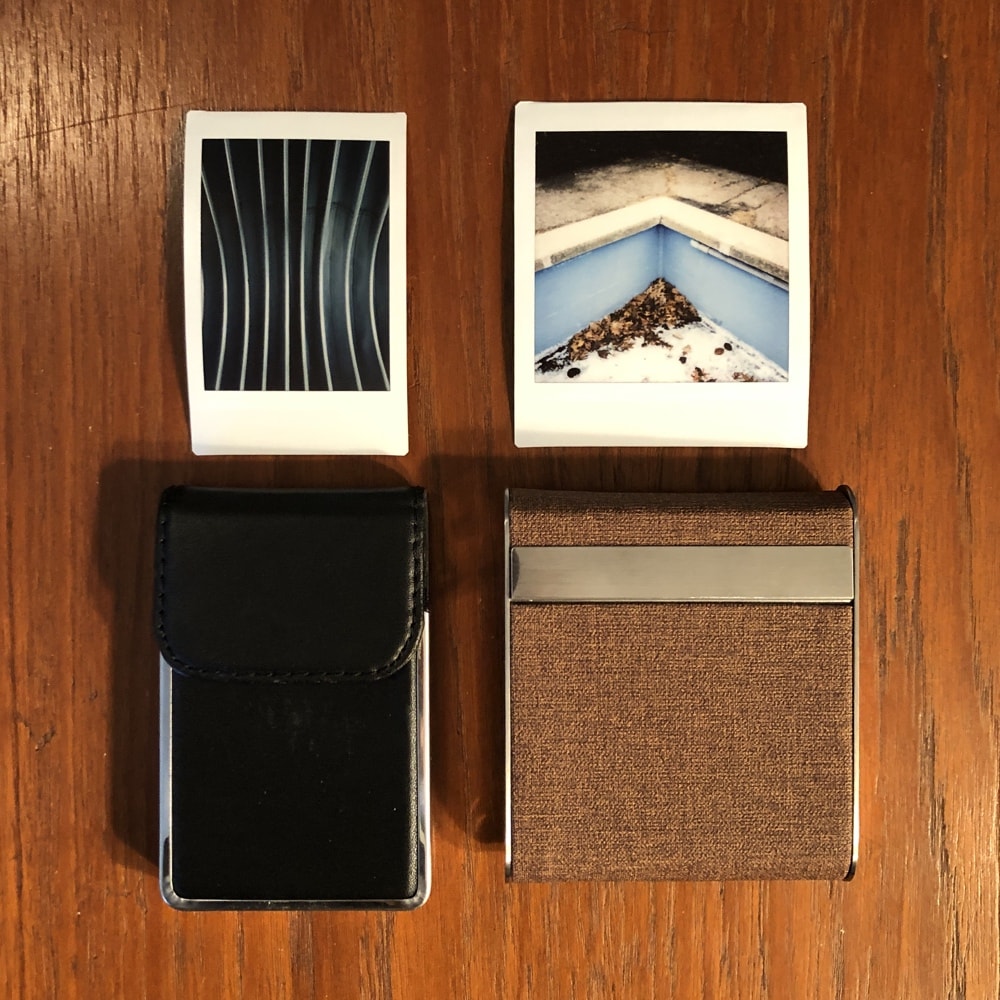
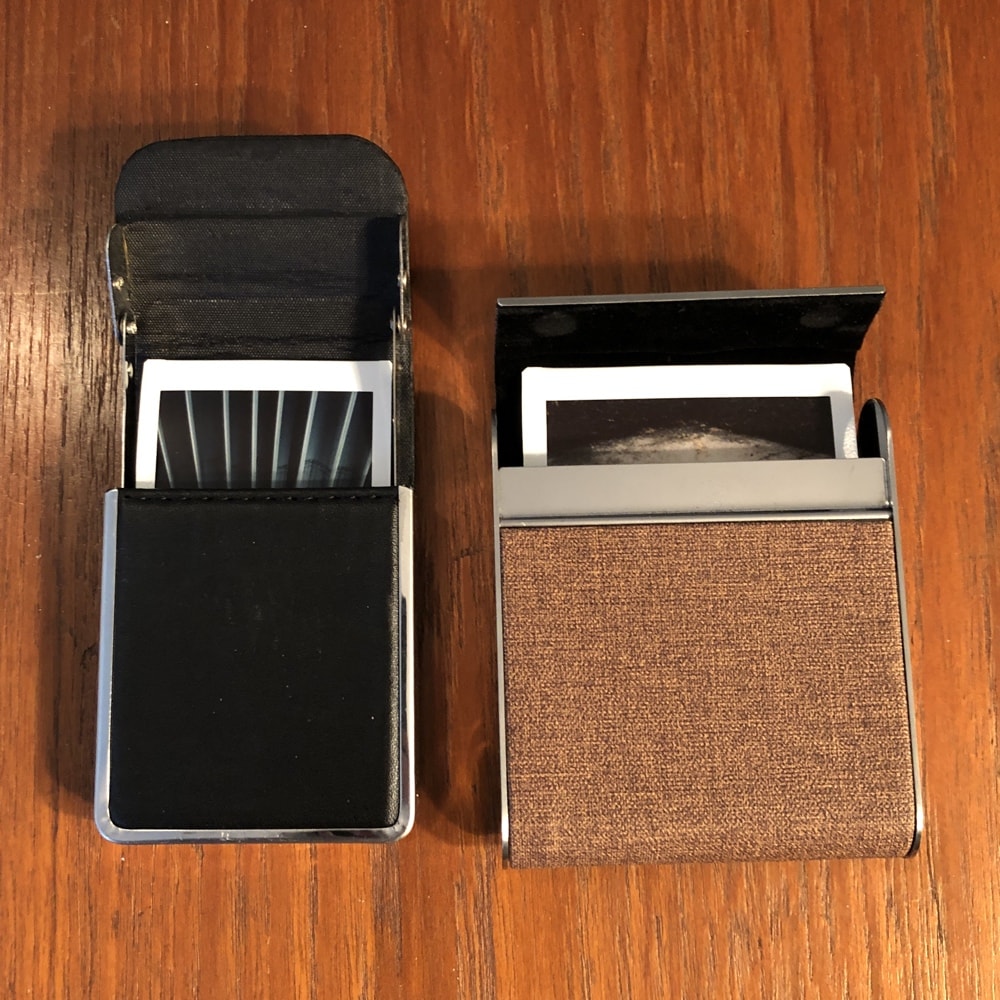
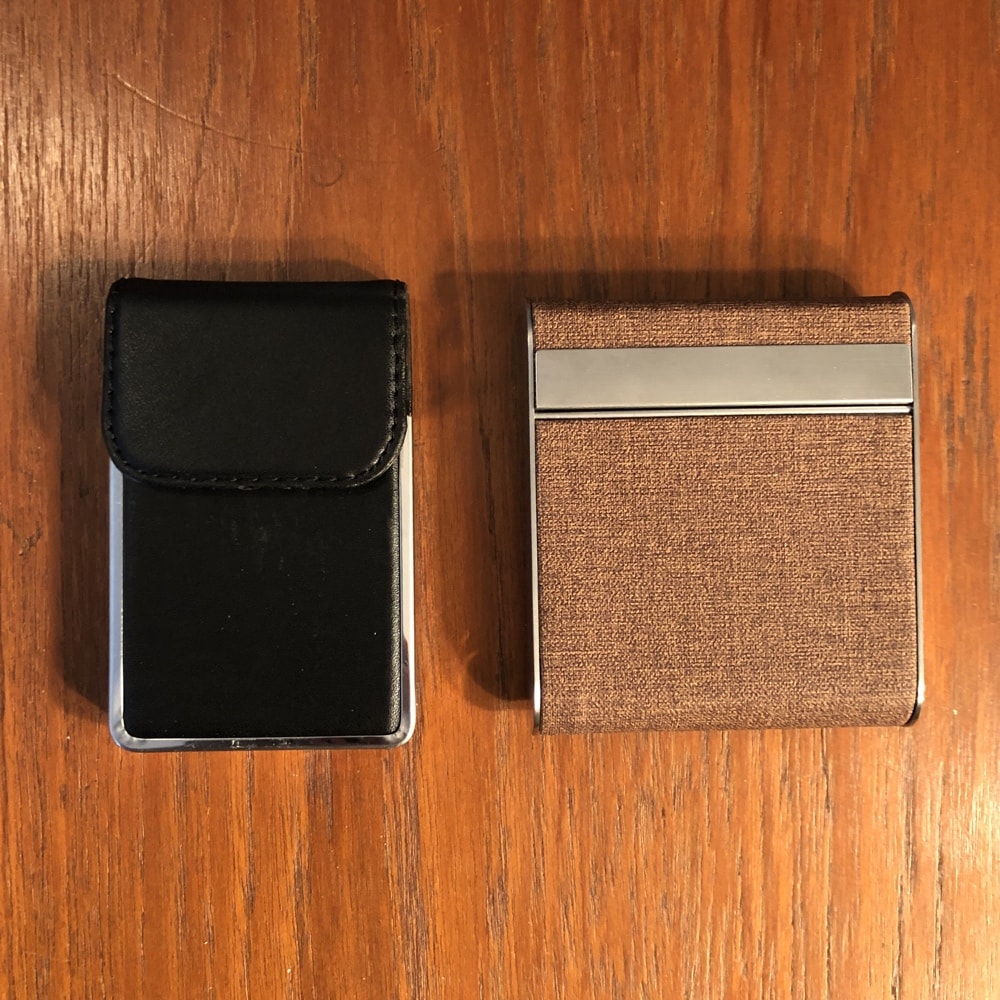
An added bonus of placing the photos in a case is that keeping them in the dark for the first few minutes after exposure apparently gives you the best results (you can think of the cases as little darkrooms for your shots to develop in). Pictured above are the cases I have, but just search Amazon for “business card case” or “cigarette case” and you’ll get lots of options. You can find vintage or unique cases on Etsy as well, and you can sometimes things in local second hand or vintage shops (for cigarette cases, anyway).
Storage
In terms of sleeves, they do exist for business cards, but because Instax Mini film is slightly larger, they won’t fit the pockets unless you try and jam them in (“jamming” not terribly harmonious with ”protection”). But trading card sleeves offer larger pockets and work well. I use UltraPro’s Silver Series. For the Fujifilm’s square format, I may have gone a bit obscure here, but after searching quite a bit, I found that Print File’s EM-6 do the trick. You can special order them through Henry’s in Canada, but I also found them in stock at Carr McLean, though at a higher price. But if you’re in the Toronto area, you can order them and pick them up curb side in Etobicoke, so you save on shipping.
I use Vue-All Archival Binders to store the sleeves. “Archival” makes them sound more impressive than they feel, but they’re reasonably sturdy, and I like how they close up as a box, doing a better job of keeping out dust than a regular binder would.
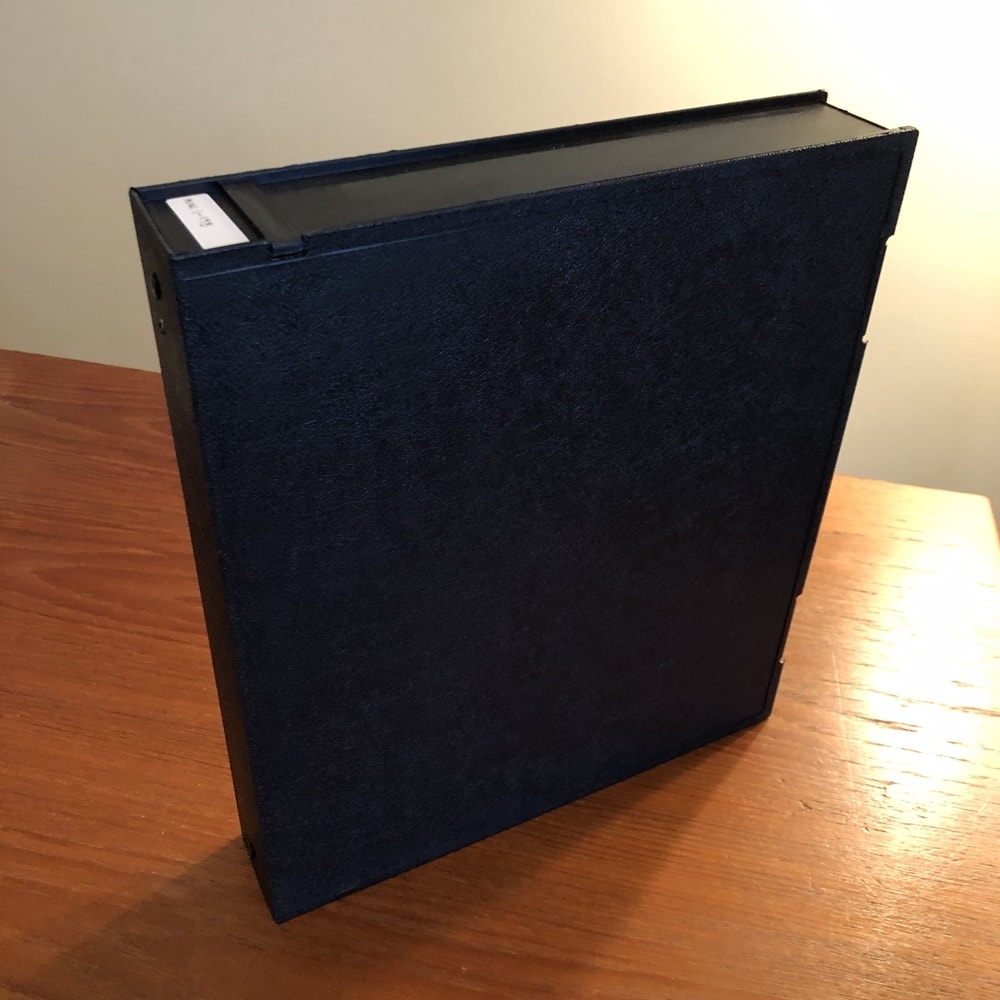
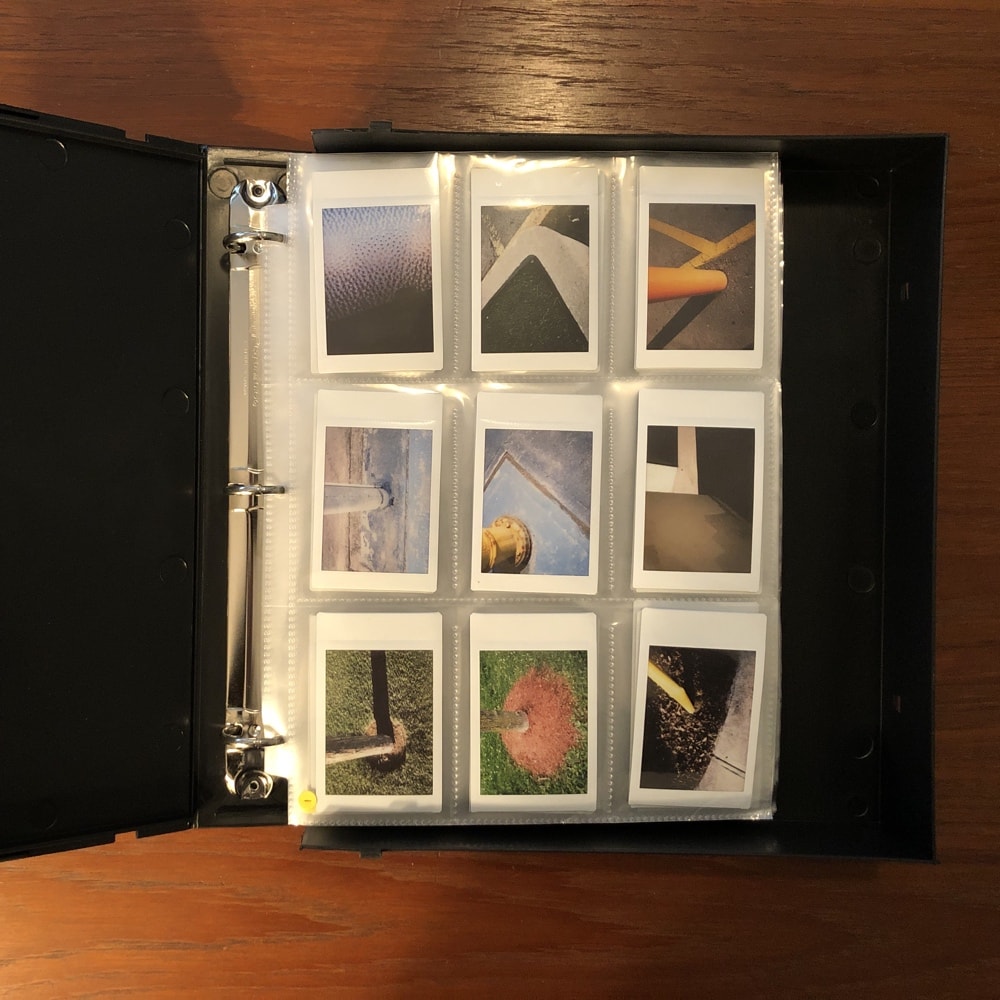
Shipping
I haven’t had to ship too many yet, but I find UltraPro’s 35pt Magnetic Holders are perfect for the Instax Mini (haven’t yet found a solution for the square format). Whether shipping it or handing it directly to someone, it’ll keep the print safe until they’ve decided how they want to frame or display it. Note that the case is not waterproof, so if shipping it, be sure your mail packaging offers some protection on that front.
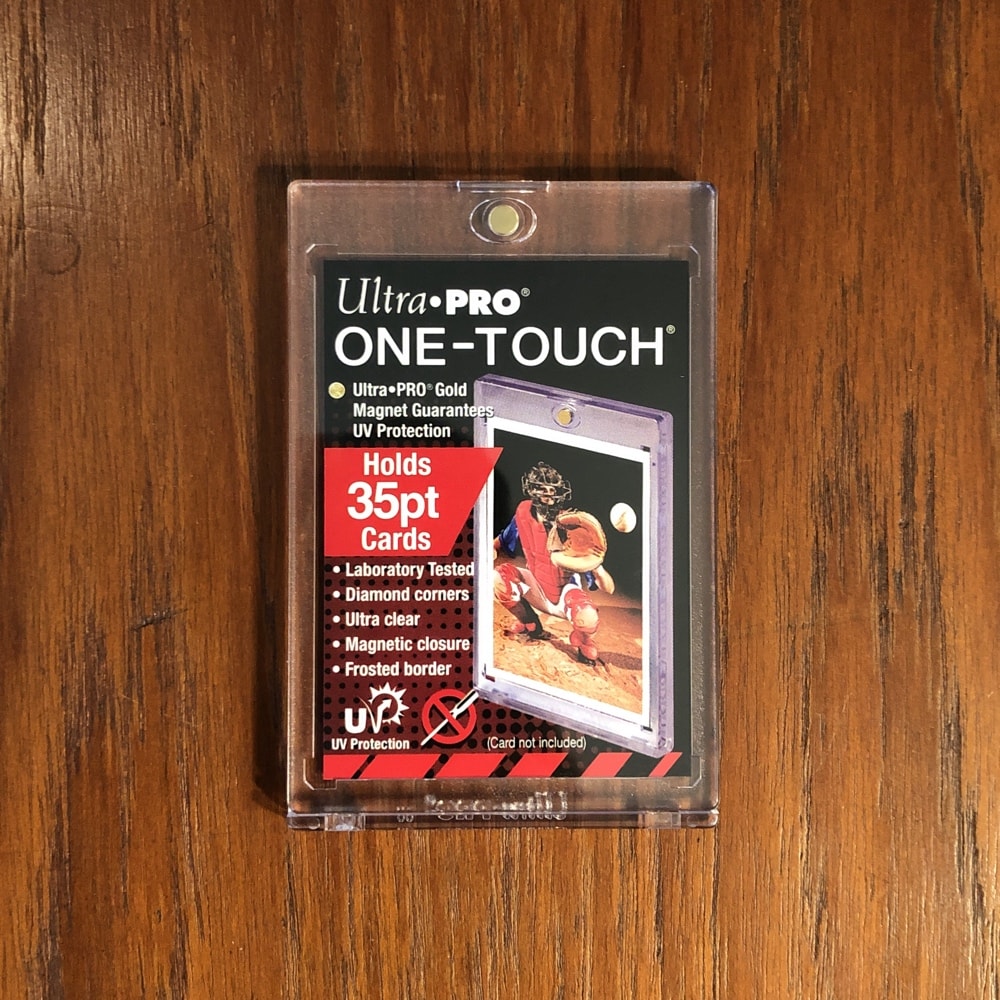
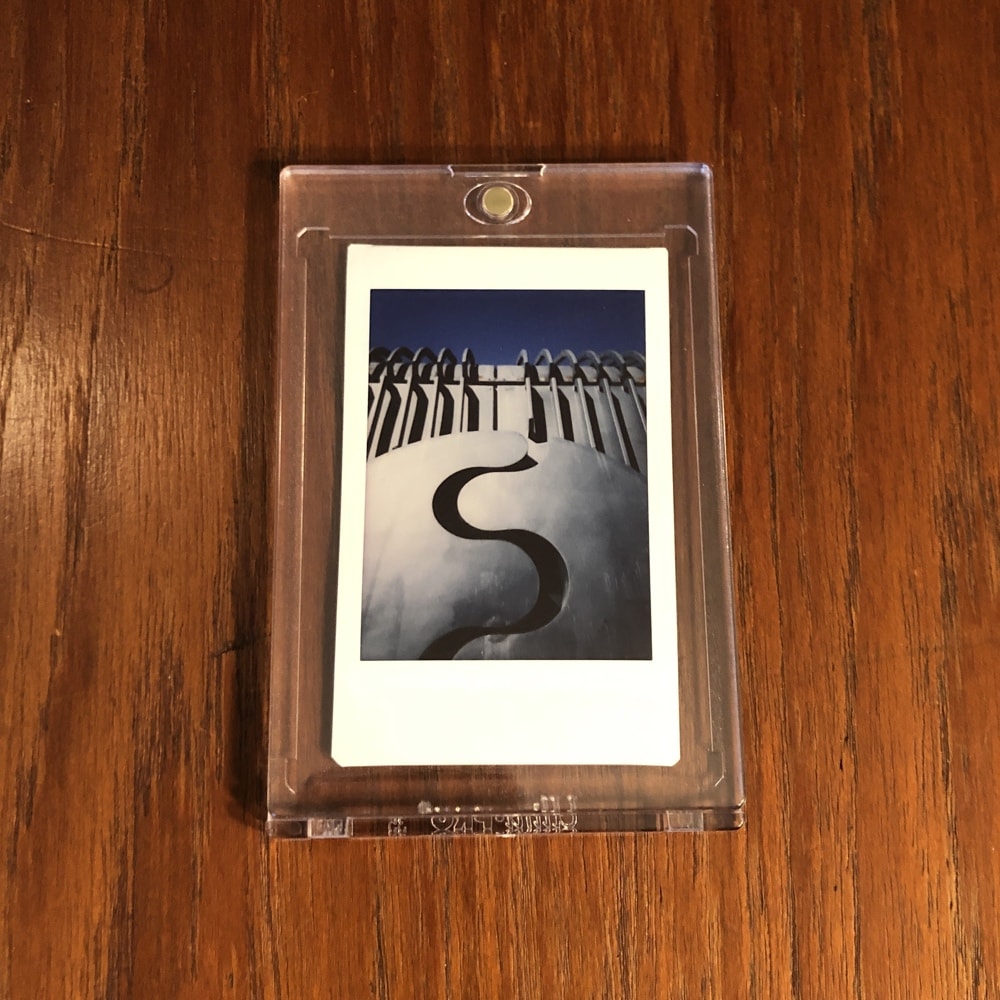
I’m a Montreal-born, Toronto-based photographer, who shoots shapes, shadows, and scenes of the urban everyday. You can see some samples of my instant film work here, and I also have a self-published book and selected prints for sale.
